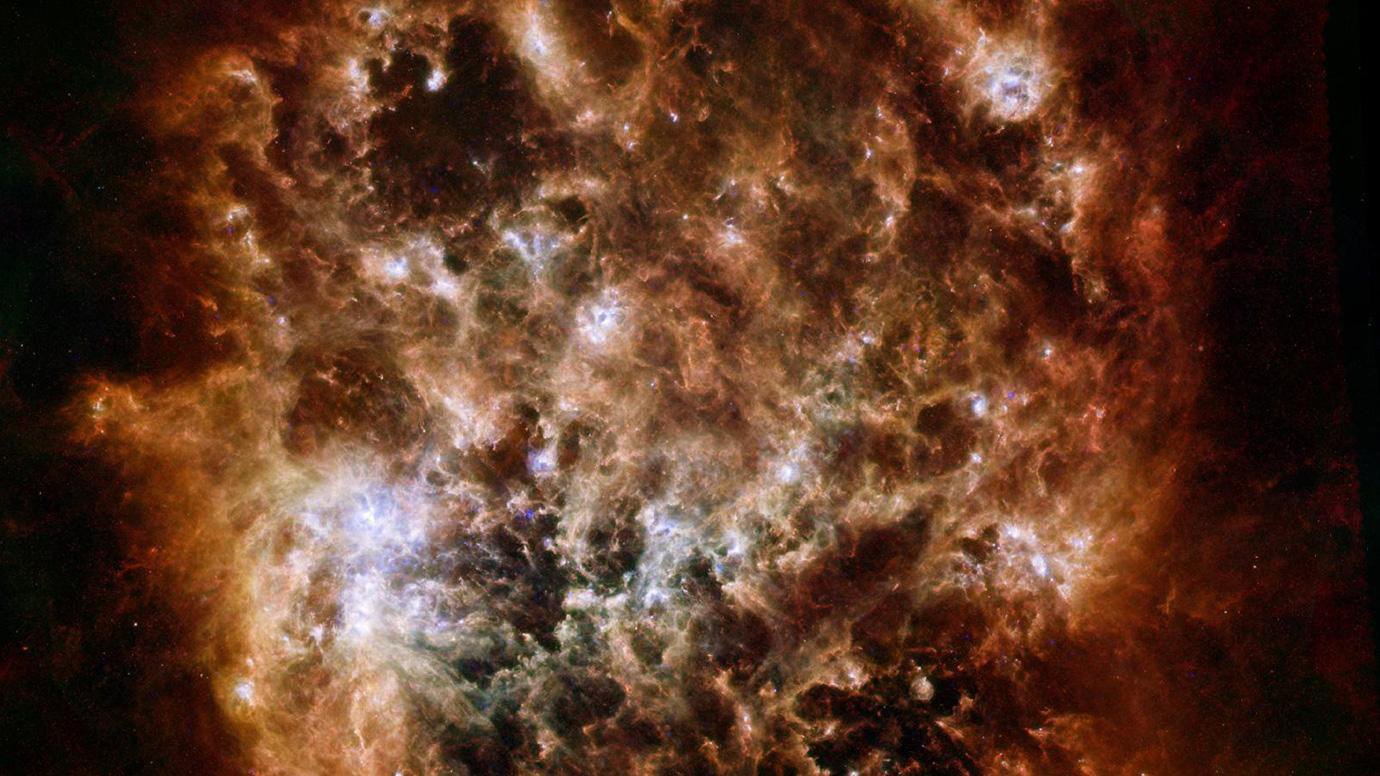A very rare second-generation star discovered at the edge of our galaxy
Follow us on Google News (click on ☆)

The Large Magellanic Cloud reveals cosmic evolution in infrared.
Credit: NASA/JPL
Inaccessible to direct observation, the first-generation stars (also known as Population III stars) left traces in the subsequent generation of stars. Anirudh Chiti, a specialist in stellar archaeology, discovered a second-generation star, formed after the first stars but before the accumulation of heavy elements.
Anirudh Chiti and his team explored the Large Magellanic Cloud to track down these ancient stars. Using the Gaia satellite and the Magellan telescope, they cataloged ten very old stars, including one particularly poor in heavy elements, indicating its formation after the first stellar generation.
This unique star shows a significantly lower amount of carbon relative to iron, unlike stars in the Milky Way, suggesting different formation processes. This challenges the universality of the carbon enrichment observed in our galaxy.
These findings also show that the Large Magellanic Cloud formed far fewer stars in its early days than the Milky Way. Anirudh Chiti plans to map the southern sky to find more of these ancient stars, thus opening new perspectives in stellar archaeology.